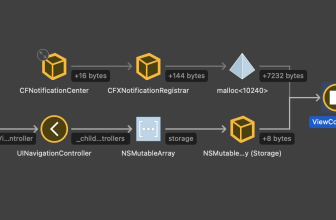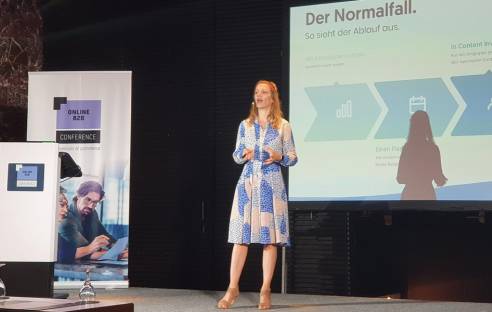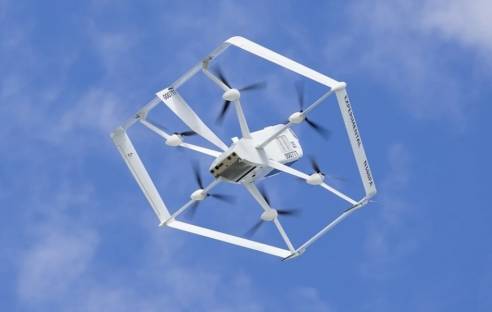The credit card company is switching its payments to public cloud and edge computing. The goal is to increase sales in a world defined by APIs and digital platforms. […]
Mastercard thrives on its global payment network. It enables the company to make 300 million financial transactions worldwide a day – guaranteed by a complex, AI-based, highly secure system . The financial services provider has now converted this system: a mix of public cloud and edge computing technologies is now replacing on-premises solutions used for decades.
Mastercard speaks of “Next Edge”: The payment network will be available wherever customers wanted to conduct their business, explains Ed McLaughlin, President of Operations and Technology. It promises additional revenue growth through faster product delivery and integration, as well as creating better customer experiences. Operational efficiency is also increasing, as customers will be served more quickly in the future and decisions that depend on regulatory requirements could be made in a timely and automated manner.
Until now, Mastercard had made its payment network available to customers via an appliance installed in their data centers. This worked smoothly as long as cashless payments were dominated by card-based transactions. But today, more and more retailers and fintechs are focusing on more diversity in digital payment services. They use payment via phone, account-to-account transfers or open banking. Mastercard wants to take a step towards these companies in the cloud and offer ways to use APIs and create new connections between platforms.
Hosted in a secure hybrid cloud environment, Next Edge is accessible to customers through standardized network interfaces and connectivity solutions. The aim is for the clientele to be able to access all Mastercard products and services via a central access point. Since the diverse international regulations for financial services require some customers to process transactions on-site, this hybrid infrastructure with a private cloud component is indispensable.
It is striking that Mastercard is as committed to the cloud as it is to edge computing. The aim is to bring data processing and storage closer to the place of data creation in order to process the large data load as quickly as possible and to get latency problems under control. Edge computing is often the prerequisite for applications to be able to provide data in real time at any given location.
Instead of relying on a central cloud data center, sometimes thousands of kilometers away, companies want to process locally generated mass data, such as those generated by mobile devices or the often countless machines integrated into an IoT network, on site. In combination with 5G mobile communications and WiFi-6 networks, edge computing enables fast on-site processing.
With Next Edge, Mastercard is responding to this trend and has developed an event-driven framework that can handle workloads at the edge. Services such as” edge decisioning ” are intended to help make decisions decentrally at locations without the need for connections to central data centers. Mastercard also provides fraud prevention services to its customers through its collaborative intelligence hubs, which are distributed globally and can run independently while customers use data from other domains or sources.
“The Edge allows us a zero-mile interface to customer systems and our issuers (card-issuing banks or financial service providers, note. D. Red.) that have moved their processing to the cloud,“ says McLaughlin. The processing logic is shifted as close as possible to the respective source device.
According to Gartner, by 2025, every second company that relies on cloud computing today will also make friends with edge computing. Global spending on content delivery and edge networks is expected to reach $ 12.4 billion this year, up from $ 10.8 billion in 2020. By 2024, the percentage of companies that have edge use cases running productively will increase from about five percent in 2019 to 40 percent.
Mastercard had to overcome some technical challenges with Next Edge. Thus, centrally deployed security solutions had to be broken up and made executable for edge environments. To achieve this, the credit card group, for example, has introduced a new solution for authentication and authorization at the edge and has entered into partnerships with certain providers of IT security services from the cloud that are suitable for the financial sector.
In addition, Mastercard needed to optimize its payment services for the decentralized edge world, guaranteeing modern technology stacks and fast network interfaces with low latency and high throughput. To achieve comparable performance, the company relies on bidirectional streaming gRPC services, an open-source, high-performance remote procedure call (RPC)technology that can run in any environment.
According to McLaughlin, however, the key to success was that changes were made to the network structure and complementary systems in a very controlled manner, so that the new Edge network remained backward compatible with the previous architecture. Mastercard launched the Next Edge project, which won a CIO 2021 FutureEdge 50 Award, in the third quarter of 2019 and partially rolled it out in the second quarter of 2020. It is currently underway in North America, Europe and Latin America; deployment in the Asia-Pacific region is in preparation.
At present, Mastercard has a network of over 3,700 edges worldwide, serving more than 30,000 customers. In December 2020 alone, more than ten billion payment transactions were processed there. the network volume of both banks and fintechs and traders will grow by double digits, it said. “It’s a good example of taking a step back and looking at where the market is going, then taking advantage of the shift and giving its customers a much wider reach and more services and more simplicity,” says McLaughlin.
* Clint Boulton is senior writer at the US sister publication cio.com.














